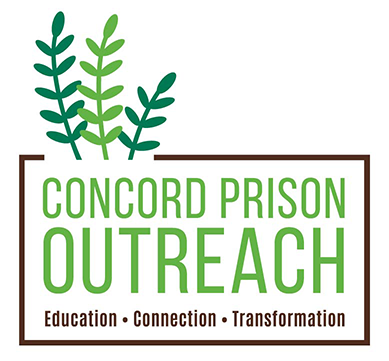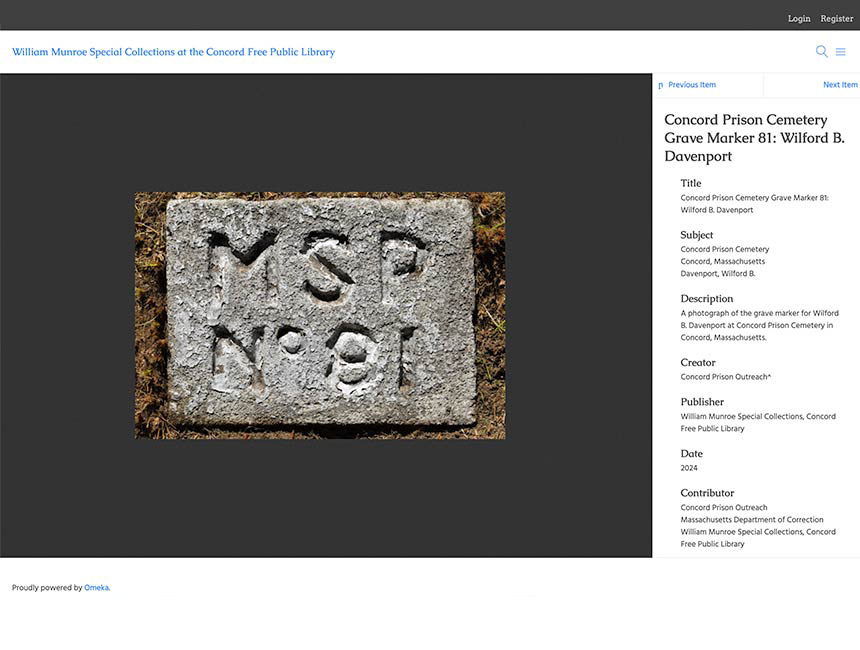The Concord Reformatory Cemetery
& Naming the Unnamed Project
Concord Prison Outreach | 100 Main Street, Concord, MA | 978-369-1430
Project Background
From 1878 until 1996, the Concord Reformatory Cemetery became the final resting place for 218 men who died while incarcerated, buried in numbered graves, with no names. The cemetery is marked by a large cement cross, mounted on a cement pedestal, visible from Route 2. By naming these forgotten men, we recognize them as people, not numbers, we turn the markers into monuments, and honor those who died while in custody.
This project is known as: Naming the Unnamed.
Who is Buried Here?
The Concord Reformatory opened in 1878. Seven men were buried in the cemetery in that first year. By 1900, 100 men were interred there. The next 100 men were buried by 1938. By then the cemetery was 60 years old and almost full. Expansion was limited due to the surrounding trees and roots. There were lapses in burials after that, with the last men buried in the 1990’s. The men came from 3 facilities died while incarcerated at the Charlestown Prison, 15% at Concord, and 11% at the Rutland Prison Hospital.
The first grave commemorates Thomas Ford, who died in 1878. Abraham William, #4, was a private in the Civil War serving in the 5th Colored Cavalry of MA. There are 10 identified veterans altogether, 2 of them black men. The last grave, #218, marks Gerald Coleman who died in 1996.
Explore for yourself. Find and filter each individual, show the prison where they died, their location within the cemetery, as you identify a name for each grave marker.
The men died of all manner of death. One-third of the men died from tuberculosis from 1879 to 1912, disease took another 20% of the men, and 13% of suicide/capital deaths.
As far as the records show, 34% of the men were immigrants, mostly from Europe (Ireland and UK). We continue to build the demographic profiles – Stay tuned!
Project History
The Naming the Unnamed project started in 2021 with a spark of an idea and grew through organic curiosity and community interest into the broader initiative project it is today.
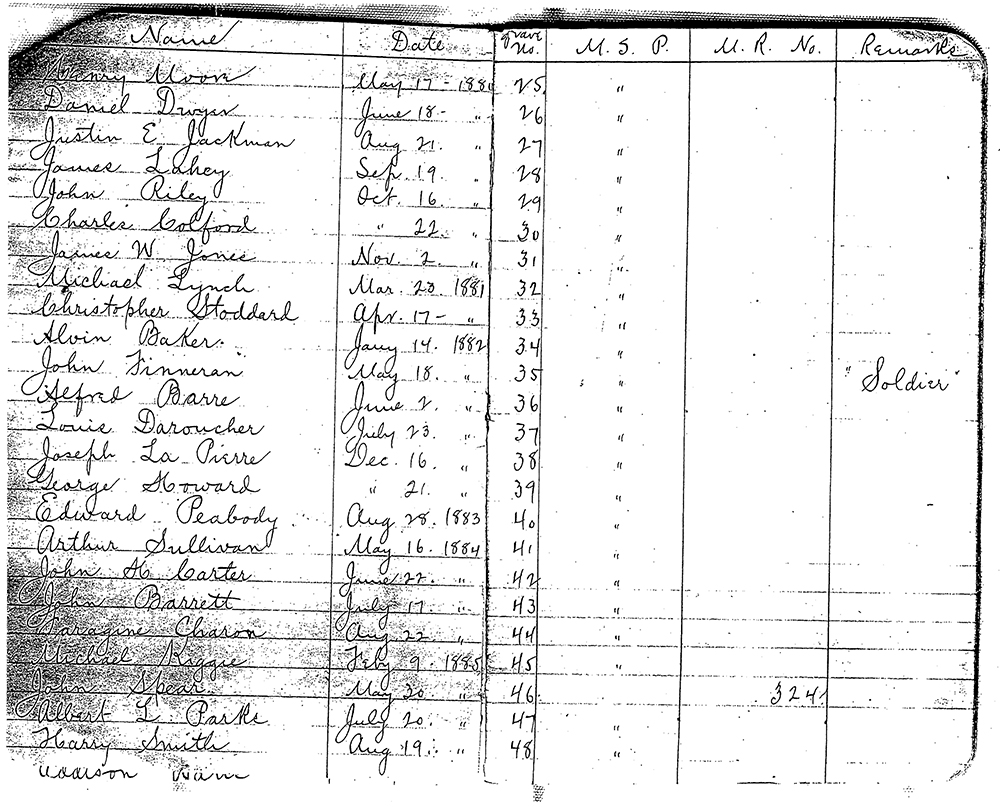
The DOC maintained a handwritten ledger which provided the definitive list of the men, which formed the basis for the biographies of each of the men buried within the cemetery.
Art for Each Man Project & Online Galleries

The William Munroe Special Collections at the Concord Free Public Library will archive the Naming the Unnamed On-Line Gallery – shedding light on the researched biographies sponsored by CPO, and the art panels and digital images of the markers themselves.
Additional galleries featuring photos of the cemetery, videos, and images of grave markers with interred names are accessible here on the CPO site through the Naming the Unnamed Project page >
Bruce Freeman Rail Trail & Contemplative Seating Area
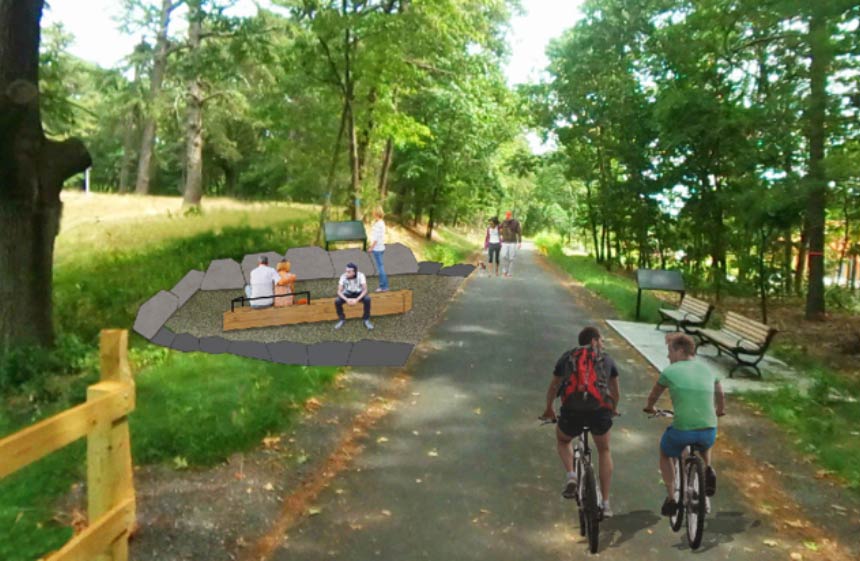
The Bruce Freeman Rail Trail is a multi-use pathway that winds its way through the communities of Lowell, Chelmsford, Westford, Carlisle, Acton, Concord, Sudbury, and Framingham, Massachusetts. Created from the 25-mile route of the old New Haven Railroad Framingham & Lowell line, the trail has a 10-foot wide pavement with 2-foot wide packed shoulders on each side, and accommodates non-motorized uses such as jogging, walking, cycling, rollerblading, and cross-country skiing.

Grateful Acknowledgment
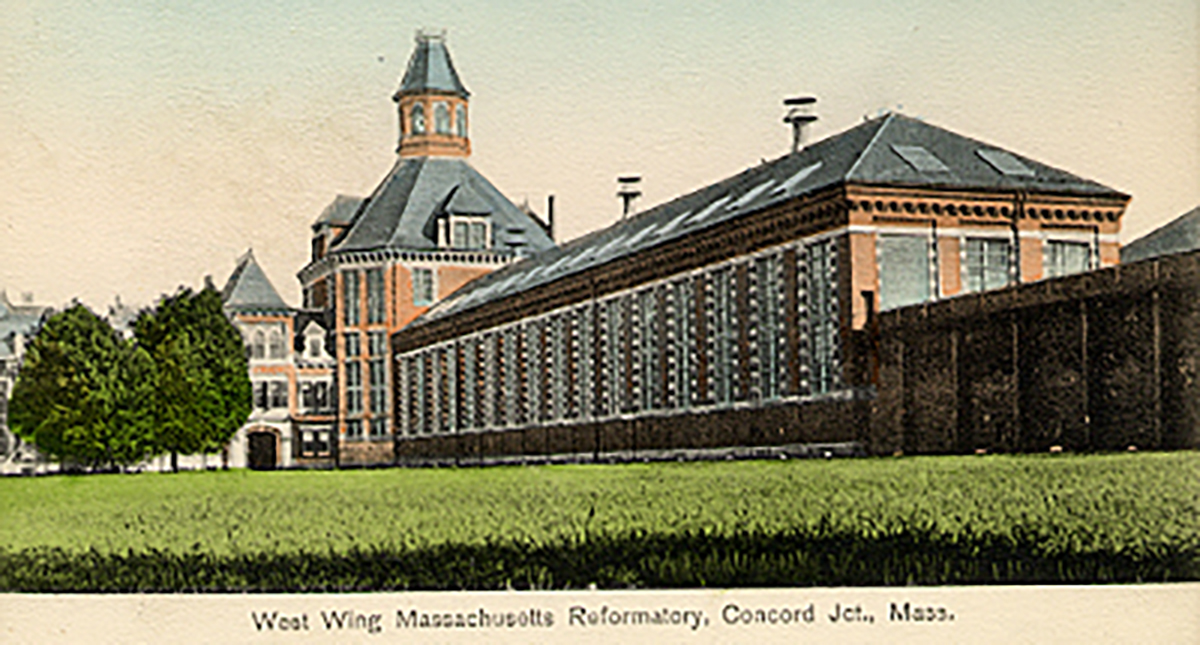
We acknowledge with grateful appreciation all the parties who have helped bring the Naming the Unnamed Project forward.
We thank Massachusetts Department of Corrections for partnership at each and every stage of the project and for all the care and attention residents and staff have spent over the decades to maintain the property, the Concord Library and Special Collections for hosting the gallery and promoting and encouraging the effort from its start, Massachusetts College of Art and Design for the creative innovative collection, to BI Studio for the interactive cemetery map and CPO website development, the Town Boards, committees and departments for supporting, to Dee’s Funeral Home of Concord for handling burial arrangements for unclaimed bodies with dignity for decades as entrusted by the Commonwealth of Massachusetts, and Select Demo, New England Tree Masters and GeoView for their donated services.
We are thankful to our funders: Concord Community Preservation Fund, Freedom’s Way National Heritage Area, Mass Humanities, West Concord Union Church, and private individuals as the Project would not be possible without their support.
